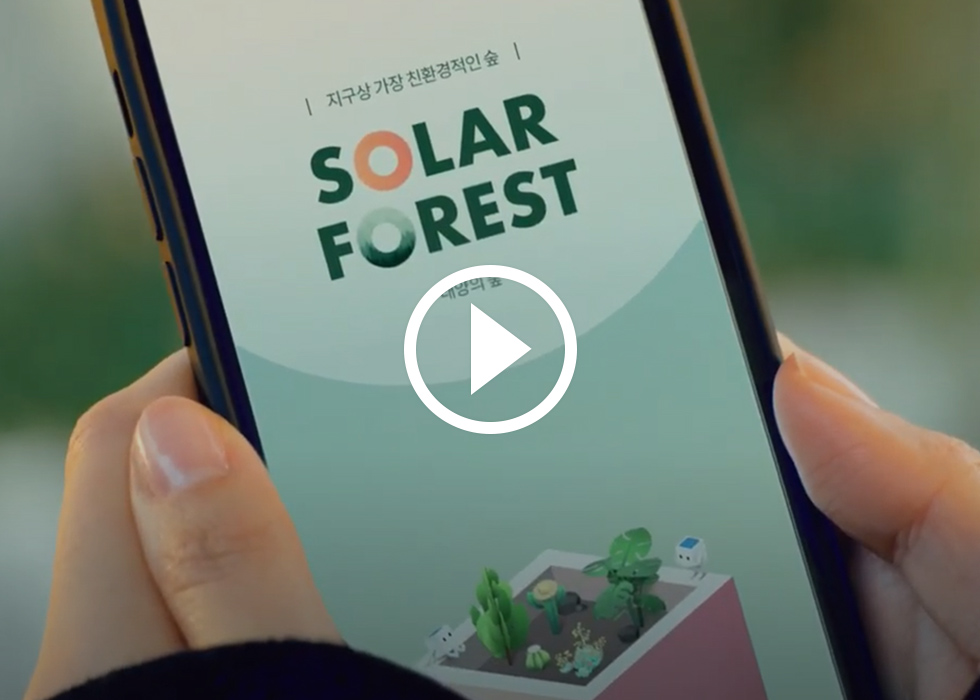Afforestation can help to tackle climate change. Here's how
Dong Kwan Kim
Chief Executive Officer, Hanwha Solutions, Hanwha Group
*This article was originally published as a contribution piece on COP26 to the World Economic Forum (WEF) on November 3, 2021.
- Afforestation – establishing a forest on land not previously forested – is one of the most effective means of tackling climate change
- Establishing enough tree cover to make a sizeable impact on rising temperatures will require a global effort
- For maximum impact, afforestation initiatives must use green energy, and engage the public

Forests are carbon sinks; they cycle damaging carbon out of the atmosphere and transform it into biomass through photosynthesis. This slows the impact of climate change
Afforestation is establishing a forest, especially on land not previously forested. It remains one of the most effective means of tackling climate change, particularly when it is designed to rely on green energy. This natural climate solution reduces the impact of desertification, supports ecosystems, and removes CO₂ from the atmosphere. It is a countermeasure against deforestation, which has been contributing to climate change dramatically for the last few centuries.
Recently, the UN Food and Agriculture Organization estimated that 100 billion square meters of forest were cut down each year over the last decade, while tropical deforestation has contributed 8 percent of global carbon emissions.
The role of afforestation in climate action
In its August 2021 report, the Intergovernmental Panel on Climate Change (IPCC), made it clear that deforestation is a direct cause of the increased presence of CO₂ in the air over the past decade, a rise incomparable to any other period in the past two million years. Forests are carbon sinks; they cycle damaging carbon out of the atmosphere and transform it into biomass through photosynthesis.
Afforestation can slow the impact of climate change while also addressing other environmental issues, such as barren land and soil erosion. Research from Crowther Lab showed that one trillion new trees could absorb one-third of CO₂ emissions made by humans. In fact, an additional 25 percent of forested area could absorb 25 percent atmospheric carbon, making a significant impact on rising temperatures globally.
Afforestation needs an international commitment
Establishing enough tree cover to make a sizeable impact on rising temperatures will require a global effort. Around the world, governments, the private sector, and local communities have started work on some promising projects.
For example, 1t.org aims to grow one trillion trees together with global communities, which would lead to the reduction of approximately 33 percent of global emissions required to meet the Paris Agreement targets. The organization works to motivate, mobilize, and enable private sector afforestation commitments by scaling plans, crowdsourcing solutions, and facilitating multi-stakeholder dialogues.
WeForest ’s work is spread over three continents and twelve countries. It has the vision of creating “a world where communities and nature sustainably thrive together.” WeForest’s trifold approach includes integrating trees among farmland, performing high-density planting for ecological regeneration, and accelerating the natural recovery of degraded land. In 2020, the organization protected and restored 160 million square meters of forest.
At Hanwha, our Solar Forest is a program initiated ten years ago. It was cited at a general meeting of the United Nations Convention to Combat Desertification in 2011 as the world’s first corporate project using solar energy to fight desertification. This initiative is different from its peers because it uses solar energy to power its nurseries. Solar energy supports the clean water supply, temperature and humidity control, and lighting conditions required to nurture saplings, creating a carbon-neutral forest. Since the program’s launch in 2011, it has created eight forests throughout South Korea, China, and Mongolia and led to the planting of half a million trees in 1.33 million square meters, equivalent to 180 soccer fields.

The second Hanwha Solar Forest pre-afforestation in Ningxia, China, 2013

The second Hanwha Solar Forest post-afforestation in Ningxia, China, 2017
The program also encourages public engagement: people can plant virtual trees using an app, and in return Hanwha plants real trees in vulnerable areas. 15,000 trees were planted in this way in the 8 th Solar Forest during the pandemic – which means an extra 162 tons of CO₂ will be absorbed every year once the carbon-neutral forest reaches maturity.
Carbon-neutral forests
Ironically, the work of tree-planting – including watering, seasonal climate control, and general maintenance – can rely heavily on fossil fuels. To reach their full potential, it is important, therefore, that afforestation initiatives use green energy. The private sector, governments and the public must design green initiatives to become net-zero, transitioning from fossil fuel use to green energy sources.
Public engagement is another important area of focus, as it serves to amplify climate action efforts. Presenting the public with simple, accessible projects helps give people achievable and realistic ways to take action. After COP26, we need to work together to ensure that trees, and the forests they populate, are replenished and planted mindfully to maintain momentum towards a greener future.
Get the latest news about Hanwha, right in your inbox.
Fields marked with * are mandatory.
- Non-employee
- Employee



